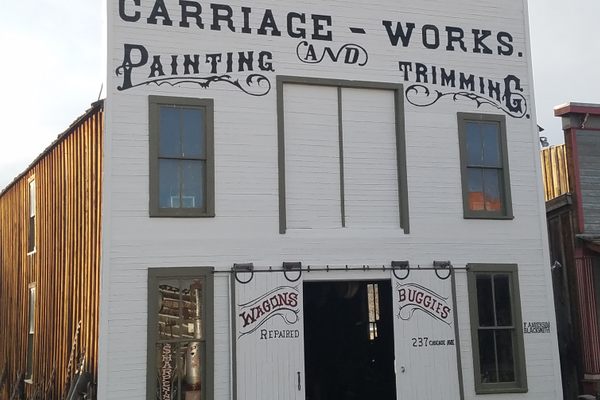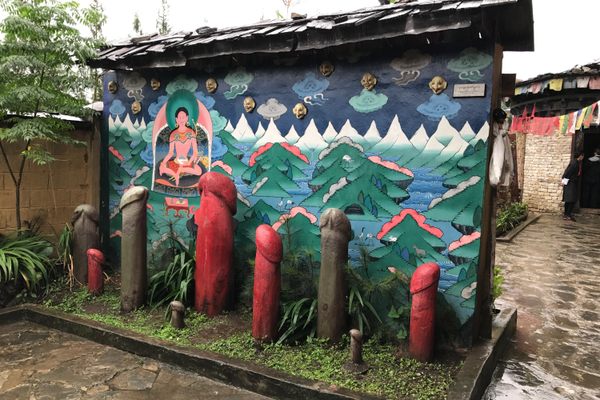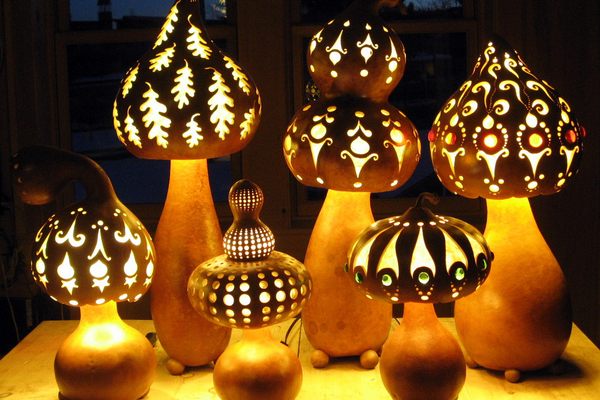AO Edited
Ute Ethnobotany Garden at the Ute Indian Museum
This high-desert oasis spotlights some of Colorado’s most sacred native plants.
In 2017, four volunteers stood amid the overgrown ruins of a 20th-century garden. The land seemed to slump beneath the weeds, caught in a snarl of thorny, invasive brambles. But the volunteers weren’t deterred; the parcel abutted the Ute Indian Museum, and they had a vision to expand the museum’s educational offerings into the landscape beyond its walls. This land, after all, was once the homestead of the legendary Ute Chief Ouray, and the final resting place of his wife Chipeta. It deserved better.
Over the next year, the ranks of the volunteers swelled to 40, and they systematically replaced all the invasive plants on the quarter-acre plot with species of native flowers, trees, and shrubs that the Ute relied on for medicinal and ceremonial uses. Today, the volunteer-run garden is a rich repository of knowledge and a true hidden gem—a refuge of colorful blooms and rustling grasses tucked within the rugged high desert of the San Juans. It’s a living, breathing museum that immerses visitors in the lifestyle of the Ute people who once called this place home.
The Ute Tribe—known among themselves as Nuche, or, “the people”—are Colorado’s oldest residents. Each year, members of the tribe traveled up and down the mountain slopes to the rhythm of the seasons, chasing game, wildflower blooms, and seed harvests to maximize the available bounty. Some bands even domesticated medicinal plants.
In the Ute Ethnobotany Garden, you can see many of the same plants the Ute relied on for food, medicine, and day-to-day tools. Wander the garden’s winding paths, and you’ll spot the sharp starbursts of scarlet gilia, the showy white blossoms of tufted evening primrose, and the willowy stalks of yellow goldenrod. Deeper in, the garden teems with foodstuffs like chokecherry and piñon pine, as well as versatile plants like yucca.
Yucca, a desert plant with blade-like leaves that resembles aloe, was a staple of Ute life. The flowers can be steamed and eaten, and the stalk’s tough fibers were used to make baskets and textiles. The Ute also processed Yucca roots to make a plant-based shampoo.
The ethnobotany garden also specializes in medicinal and ceremonial plants like curlycup gumweed, a tufted yellow flower that can be used to treat asthma, and Rocky Mountain Bee Balm, a ceremonial flower that Ute Elders visit the gardens each year to harvest.
Join an official ethnobotany tour or simply let your feet carry you through the serene labyrinth of shaded paths. Be sure to pay your respects at Chipeta’s memorial and the garden’s other centerpiece: a peace pole that says “Peace on Earth” in hundreds of languages, including the Ute language Núu-‘apaghapi. Take a seat and let the messages sink in. When the grasses bow and the blooms nod in the breeze, it’s easy to feel like a hint of that peace has already come.
Know Before You Go
The museum, located at 17253 Chipeta Road in Montrose, Colorado, is open from 9 a.m. to 4:30 p.m. Monday through Saturday and 11 a.m. to 4 p.m. on Sunday. Usually the best time to visit is mid-morning during spring and summer when most of the flowers are blooming.
Interpretive ethnobotany tours are available during special events, but can sometimes be booked for large groups in advance; check online for details.


%20(1)%20(1)-2.png)













Follow us on Twitter to get the latest on the world's hidden wonders.
Like us on Facebook to get the latest on the world's hidden wonders.
Follow us on Twitter Like us on Facebook